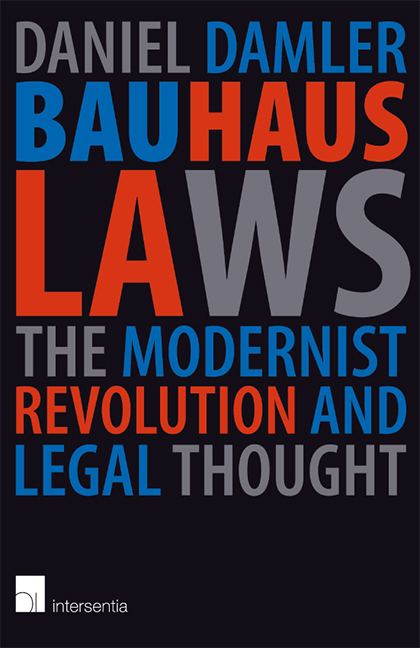Book contents
- Frontmatter
- Acknowledgements
- Contents
- Platonic Modernism: Introduction
- 1 Vienna 1900: Pure Legal Craftwork
- 2 Utopias Built with New Forms and Materials: Taut, Zamyatin, Le Corbusier
- 3 Hijacking Modernism: Bauhaus Values in the Third Reich
- 4 One-World Beauty: International Law and International Style
- 5 Regaining Sovereignty: “Transparency” in Postwar Germany
- Kandinsky's Laws: Epilogue
- About the Author
4 - One-World Beauty: International Law and International Style
Published online by Cambridge University Press: 15 November 2019
- Frontmatter
- Acknowledgements
- Contents
- Platonic Modernism: Introduction
- 1 Vienna 1900: Pure Legal Craftwork
- 2 Utopias Built with New Forms and Materials: Taut, Zamyatin, Le Corbusier
- 3 Hijacking Modernism: Bauhaus Values in the Third Reich
- 4 One-World Beauty: International Law and International Style
- 5 Regaining Sovereignty: “Transparency” in Postwar Germany
- Kandinsky's Laws: Epilogue
- About the Author
Summary
A very unique relationship existed between modern architecture and international law in the first half of the twentieth century. These were heady years, a time of unprecedented decline as well as unprecedented triumph for the idea of an international community of law. The slaughter of World War I and the unimaginable barbarity of World War II were followed, for the first time in human history, by concrete measures to create a global legal space with its own organizational structure: first the League of Nations, then the United Nations. Since the rise of the state in the early modern period was partly, and not least of all, the product of a highly effective visual strategy, the question arose after 1918 and again after 1945 as to whether it would be possible to develop a similarly effective visual symbol for these new institutions of international law. Having relatively little financial and human resources at their disposal, unlike the more powerful nation-states, they relied in particular on the support of a complementary aesthetic program to push through their agendas.
The first experiences of modern architects with the procedures of international organizations were anything but auspicious. When the League of Nations, founded in 1919, was looking for a home in Geneva, it chose the newly renovated Hôtel National (later renamed Palais Wilson), a representative grand hotel well situated on the promenade of Lake Geneva. Old-school diplomats with their weakness for grandiose facades and exquisite interiors must have been thrilled about this choice, and this probably played no small part in the decision-making process. But even the most hardened opponents of functionalist architecture must have eventually realized that a building with 79 bathrooms was not particularly suited to housing a Permanent Secretariat with all of 60 employees.
Thus, in 1924 the (fifth) General Assembly decided to host an international architecture competition with a likewise international – though ultimately purely European – jury of architects to select the winning design. The jury comprised a number of well-known individuals – Josef Hoffmann of Vienna, Karl Moser from Switzerland and Victor Horta from Belgium – and not all of its members were hostile towards newer architectural styles, though all belonged to the old generation of architects with their feet firmly planted in the nineteenth century.
- Type
- Chapter
- Information
- Bauhaus LawsThe Modernist Revolution and Legal Thought, pp. 107 - 158Publisher: IntersentiaPrint publication year: 2019



